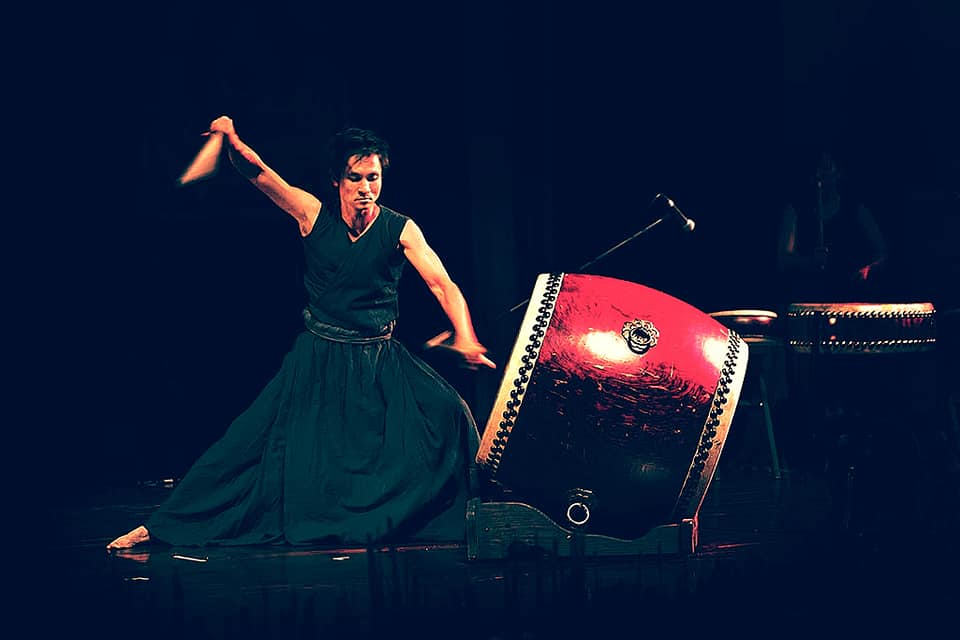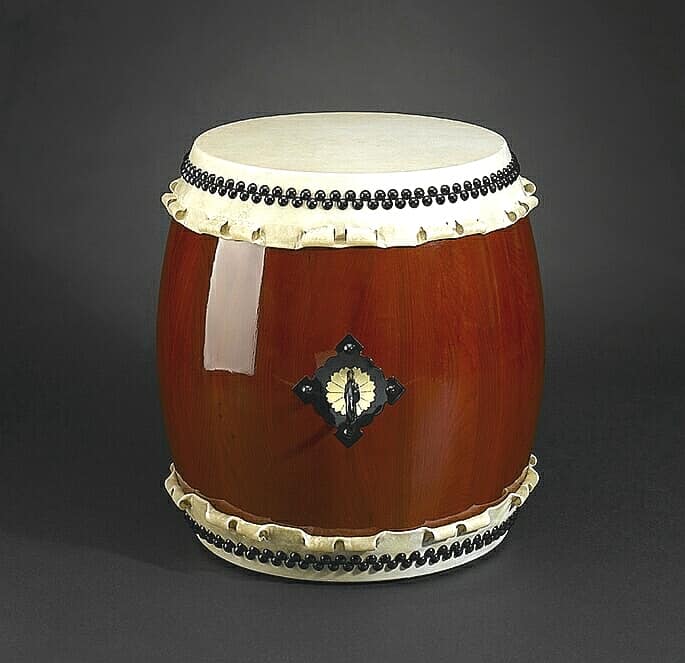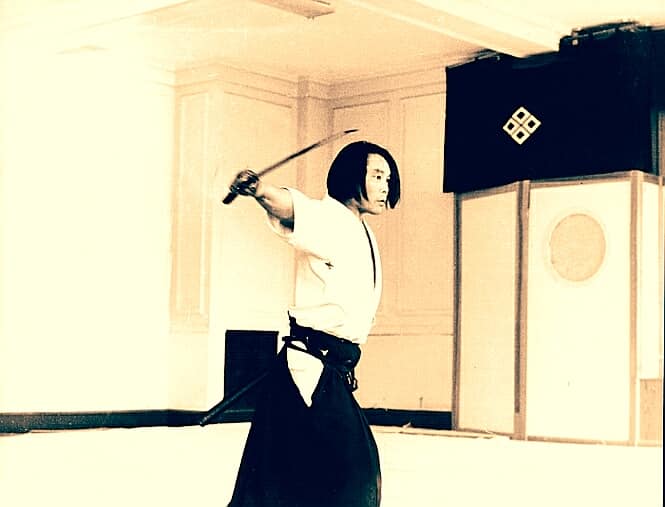In feudal Japan, taiko were often used to motivate troops, call out orders or announcements, and set a marching pace; marches were usually set to six paces per beat of the drum.
During the 16th-century Warring States period, specific drum calls were used to communicate orders for retreating and advancing. Other rhythms and techniques were detailed in period texts. According to the war chronicle Gunji Yoshu, nine sets of five beats would summon an ally to battle, while nine sets of three beats, sped up three or four times, was the call to advance and pursue an enemy.
Folklore from the 16th century on the legendary 6th-century Emperor Keitai offers a story that he obtained a large drum from China, which he named Senjin-daiko (線陣太鼓, “front drum”). The Emperor was thought to have used it to both encourage his own army and intimidate his enemies.
Taiko have been incorporated in Japanese theatre for rhythmic needs, general atmosphere, and in certain settings decoration.

In the kabuki play The Tale of Shiroishi and the Taihei Chronicles, scenes in the pleasure quarters are accompanied by taiko to create dramatic tension.Noh theatre also feature taiko where performance consists of highly specific rhythmic patterns. The Konparu (金春流) school of drumming, for example, contains 65 basic patterns in addition to 25 special patterns; these patterns are categorized in several classes.
Differences between these patterns include changes in tempo, accent, dynamics, pitch, and function in the theatrical performance. Patterns are also often connected together in progressions.
Taiko continue to be used in gagaku, a classical music tradition typically performed at the Tokyo Imperial Palace in addition to local temples and shrines.

In gagaku, one component of the art form is traditional dance, which is guided in part by the rhythm set by the taiko. Taiko have played an important role in many local festivals across Japan. They are also used to accompany religious ritual music.
In kagura, which is a category of music and dances stemming from Shinto practices, taiko frequently appear alongside other performers during local festivals. In Buddhist traditions, taiko are used for ritual dances that are a part of the Bon Festival.
Taiko, along with other instruments, are featured atop towers that are adorned with red-and-white cloth and serve to provide rhythms for the dancers who are encircled around the performers.
Source: Facebook/aikido



